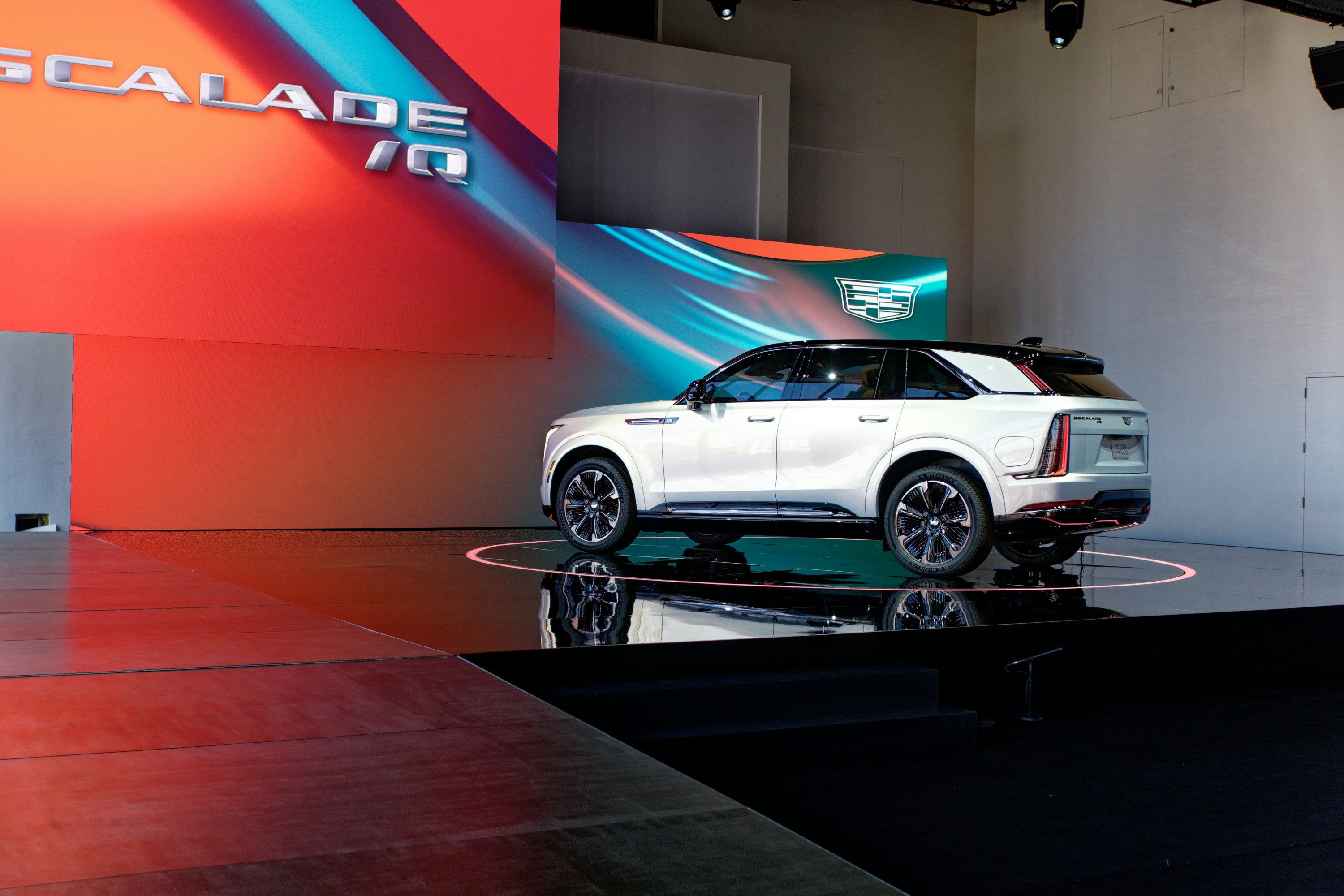
The current, V-8-powered muscle truck, the Cadillac Escalade, is America’s best-selling seven-passenger luxo barge. Last quarter Cadillac sold nearly 50 percent more Escalades than BMW sold X7s. And no other carmaker was a close third.
But Cadillac is about to seriously mess with that formula with the new electric Escalade IQ that goes into production next summer as the brand moves more upscale and fully electrifies.
The good thing? It won’t run you the $349,000 starter-home sticker of the bespoke Cadillac Celestiq. But at $130,000, the electrified Escalade tab will induce significant sticker shock for anyone who wants to replace a gas version that started at an already painful $83,000. Given the company it keeps — BMW’s iX, and Mercedes’ EQS SUV — Cadillac is arguing buyers already chose their brand vs. the Germans. And maybe that continues. The ledger of features and smarts certainly makes a good case — and so did the IQ’s creators, who spoke with Inverse at the EV’s New York City debut.
Big SUV, big battery
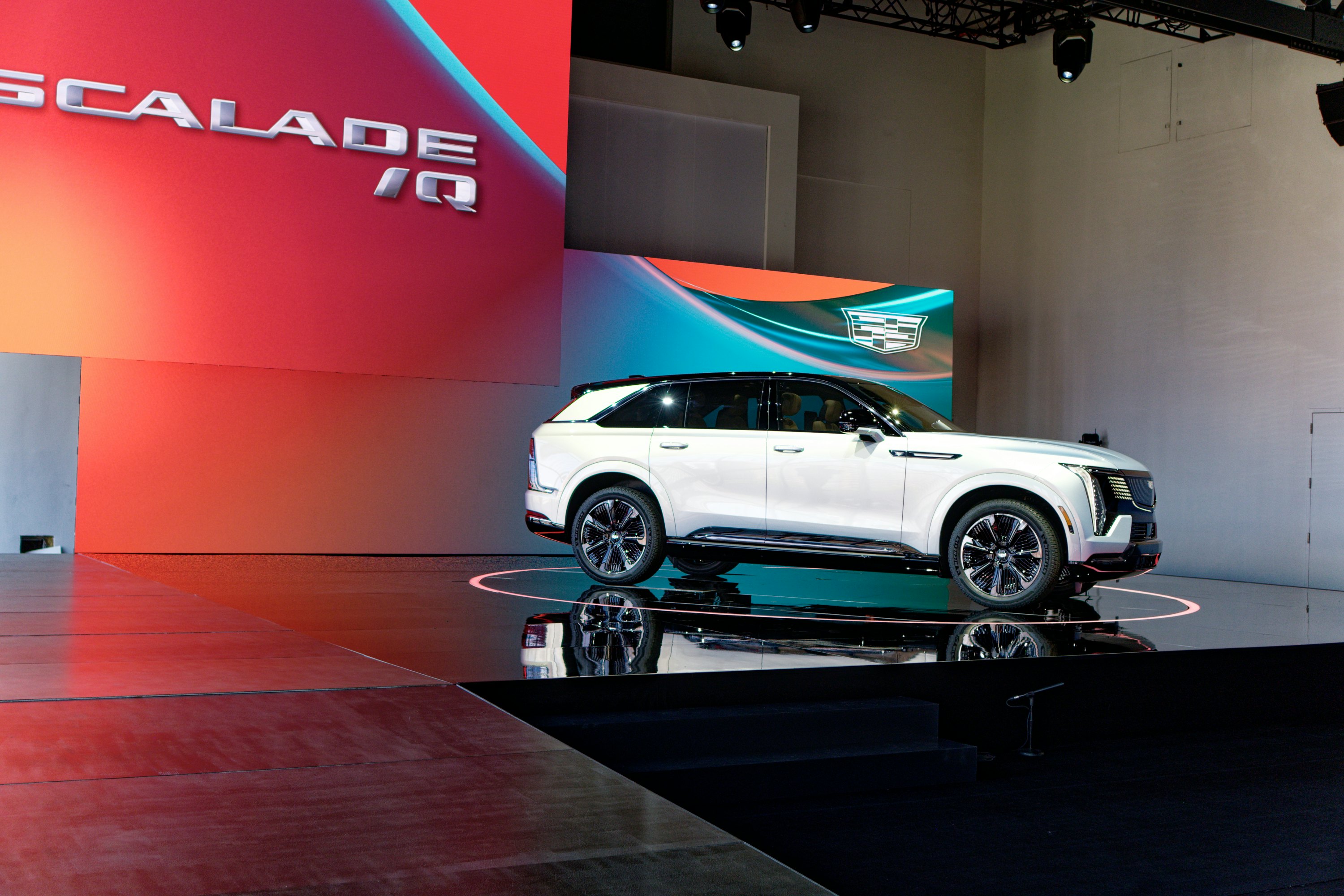
The first thing you need to know is that the Escalade IQ is a massive EV, and as such, it has an equally giant battery.
While both the GMC Hummer and the Cadillac IQ run on GM’s Ultium battery system, the IQ isn’t quite as muscular. Still, with 750 horsepower (versus 830 horsepower for the Hummer) it will hit 60 mph in five seconds flat. Though output bests both BMW and Mercedes, both the iX and EQS claim faster acceleration, which is probably down to weight.
Speaking of weight, Cadillac says a massive, 200 kWh battery threaded to dual, front and rear motors will get drivers 450 miles of range between charges. DC fast charging at 800V will fuel up to 100 miles of range in 10 minutes. That’s a big deal, because to date a lot of carmakers haven’t been able to hit that ultra-fast-charging target — notably the leaders here have been Kia, Hyundai and Genesis.
And as big as the IQ goes on battery, everything else on this EV is equally as ostentatious.
Screen Wars
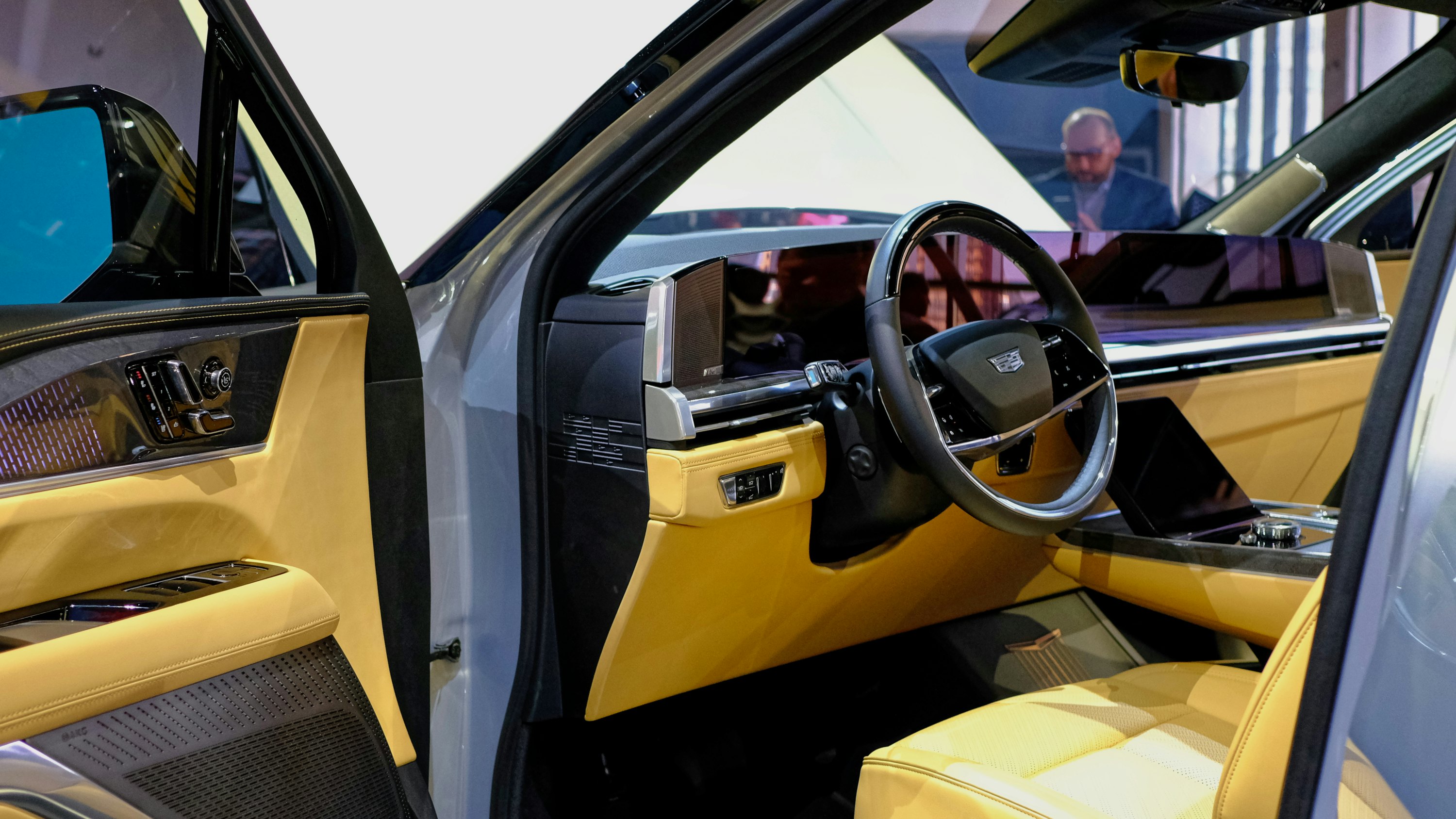
Mercedes’ Hyperscreen pans the dash of the EQS SUV and stretches to 56 inches. Cadillac’s is almost as long, at 55 inches, and clearly, if it was a size discussion, Cadillac could’ve upped the ante because theirs is bracketed by speakers at either end that eat into that dashboard real estate. (Note: Those are part of a sound system that can include up to 40 speakers.)
Size, schmize: At a separate stand, Cadillac let us try the user interface and it’s more intuitive than Mercedes’ with the instrument cluster melding into the central control panel, and another sub-screen at hand level for the front driver or passenger. Here, a rotary dial, a la Ford’s Mustang Mach-E, lets you toggle through functions rather than only tapping and swiping. As Craig Sass, Cadillac’s interior design manager explained, it was important for that wall of curved glass to look elegant.
“You don't want this screen, which is incredibly important here, to overwhelm. As with anything, all the stuff we're providing now should be an assistance to you when you're on the road, not a distraction.”
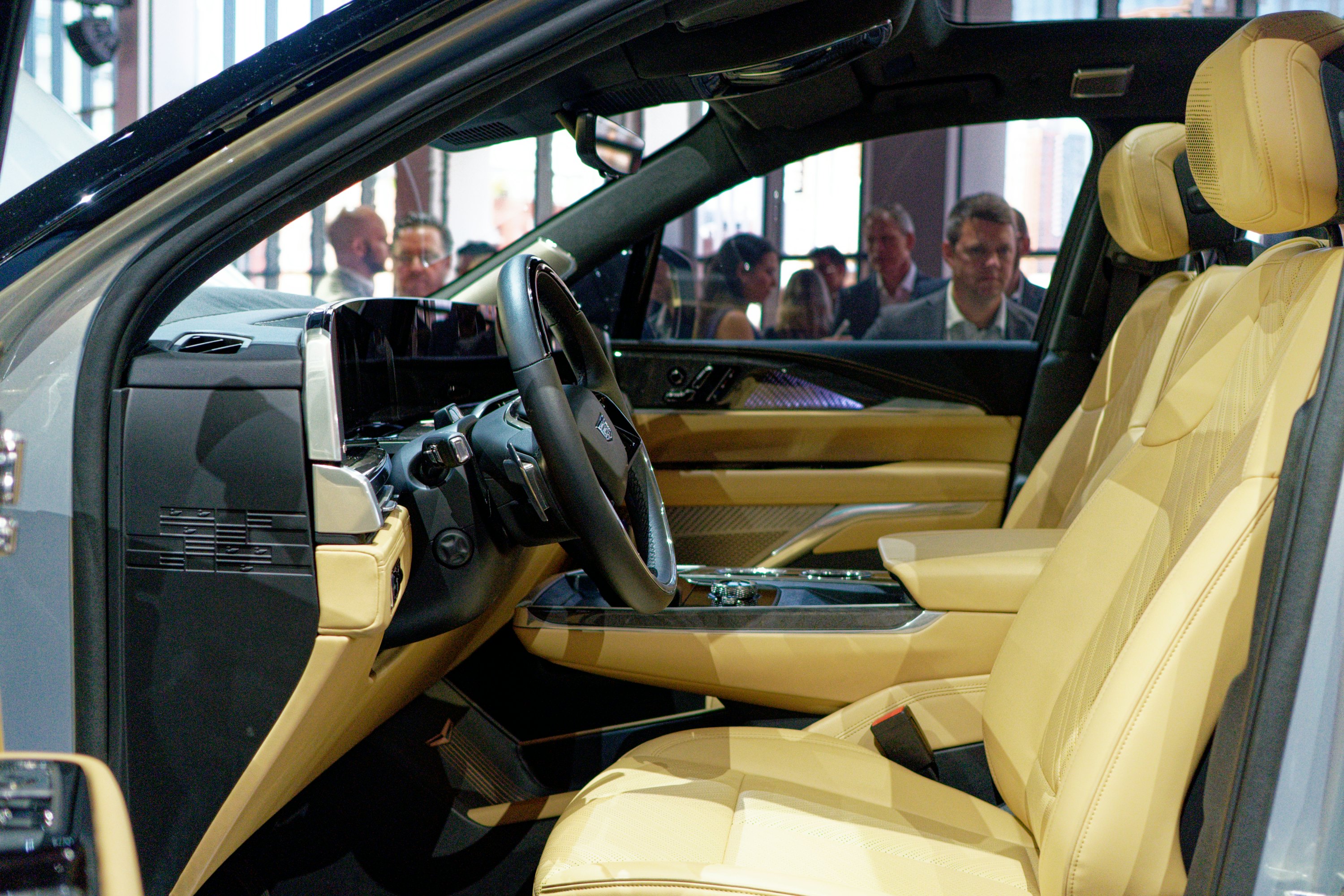
Sass also makes the same point about the center armrest tablet in the second row, which lets that passenger control their own audio and video on two more LED units pinned to the rear of the front seatbacks. Not everyone is going to be driving their own Escalade, which is why Cadillac essentially takes the two front seats and puts them in the second row, with the same in-headrest speakers, and identical massage, heating, and cooling.
What Cadillac talked less about with all this tech is the corporate move to ditch Android Auto and Apple CarPlay. (Instead, the IQ gets Google built-in, Google Play, and Google Maps.) FYI: Tesla’s done just fine without using any third-party integration, and Rivian walked back such partnering, too; Polestar didn’t have that functionality for quite a while, and like GM, went the Google route.
Same escalade aesthetic
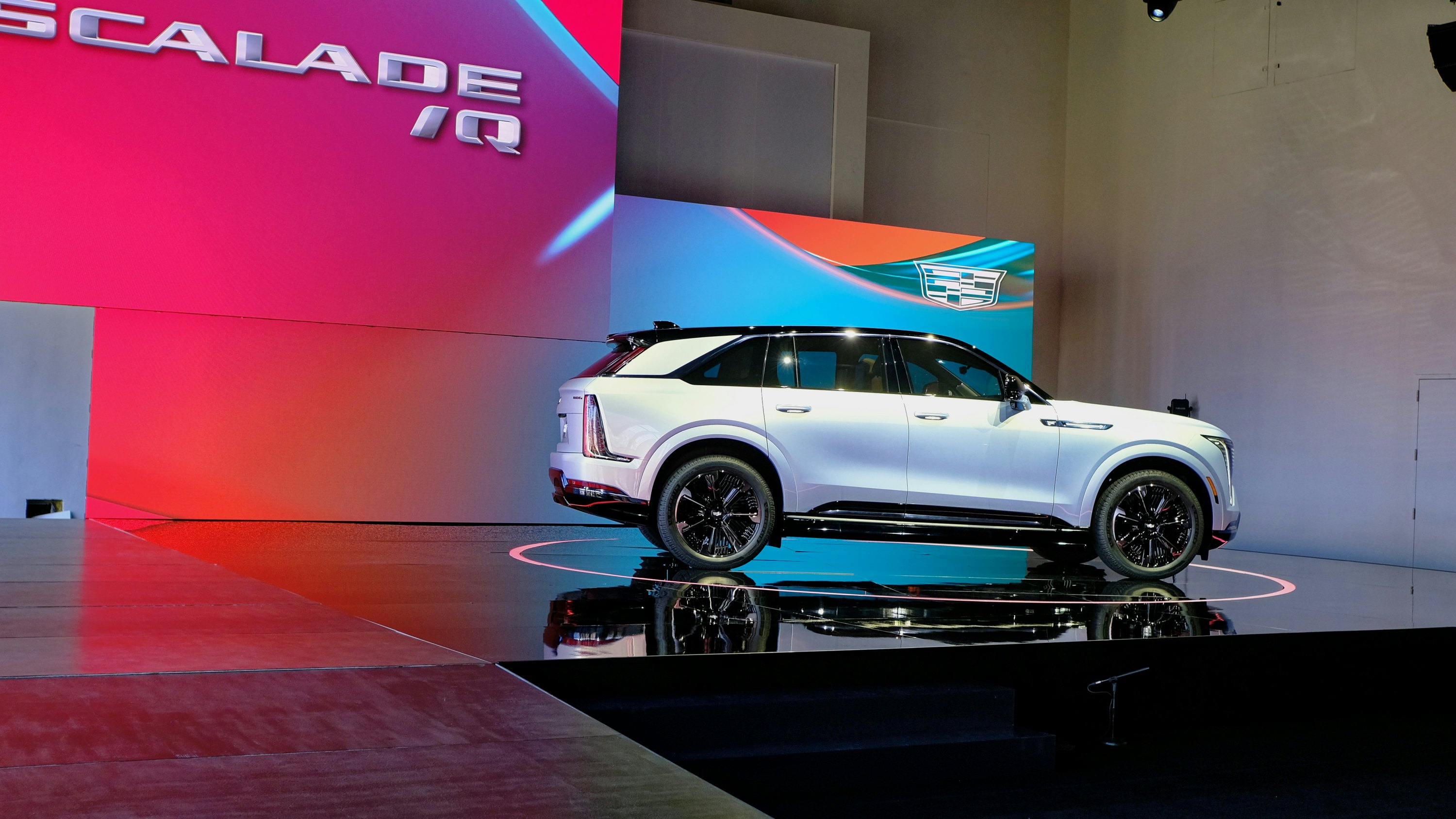
The exterior of the Escalade IQ will remind you of… the current Escalade. You can’t really blame Cadillac designers for this. When you’re crushing rivals in sales you’re definitely not going to let them up for air, and it’s a gimme to say that the electrified IQ does look tauter and cooler, and GM boasts that this is the most aerodynamic large SUV the carmaker has ever built.
That’s not just about looks — you can hear aero (or its lack) in an EV and that either leads to tranquility or off-putting tones. Plus, any EV that’s not slippery has to be recharged more frequently. Cadillac “fast-backed” the Escalade and it definitely looks sportier. Dare we say it nearly looks like a wagon in the best way possible?
Tim Kozub, Cadillac's head of exterior design, points to the fact that the IQ sits on a battery — not a truck chassis, for how they managed that sleeker look. “It just so happened that we wanted to make it more aero, but we wanted that sloping roofline to get something sportier. It’s just sweeter, right?”
Speaking of that, Kozub said the wheels — which went through literally hundreds of iterations — had to balance the engineering challenges of aero, while still being reasonably sexy. Which is why, he explained, there was painstaking surface work to look intricate, while still ensuring they cut through wind.
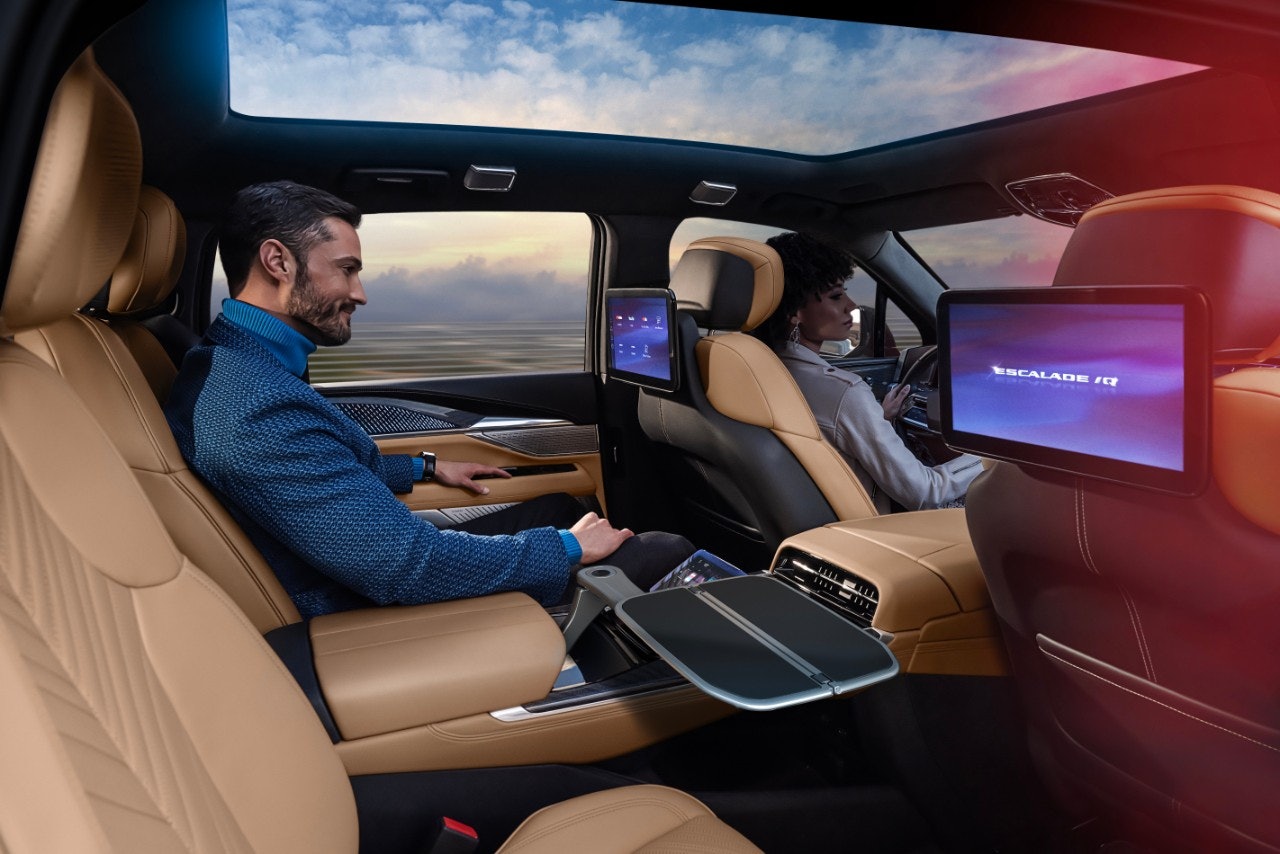
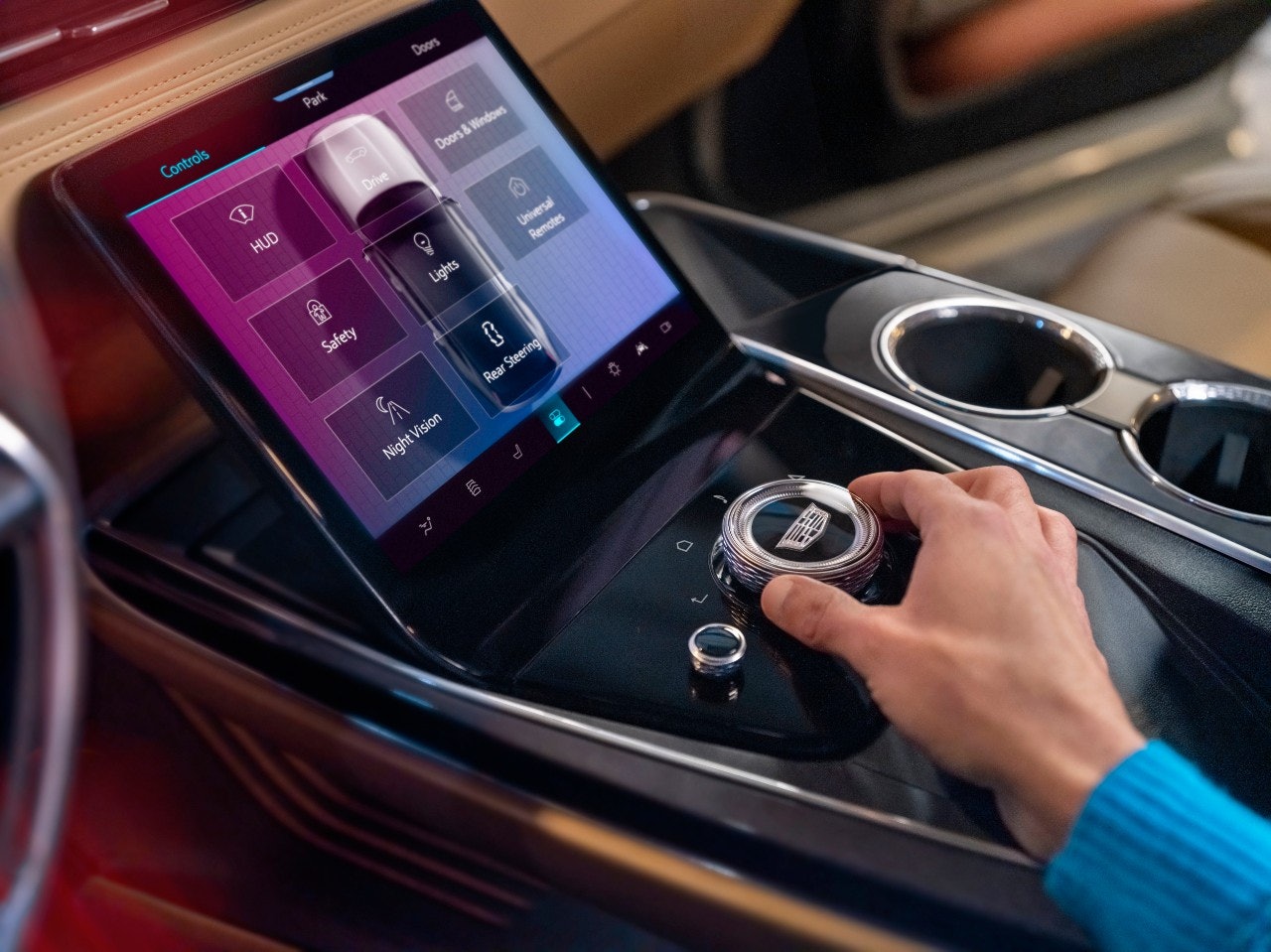
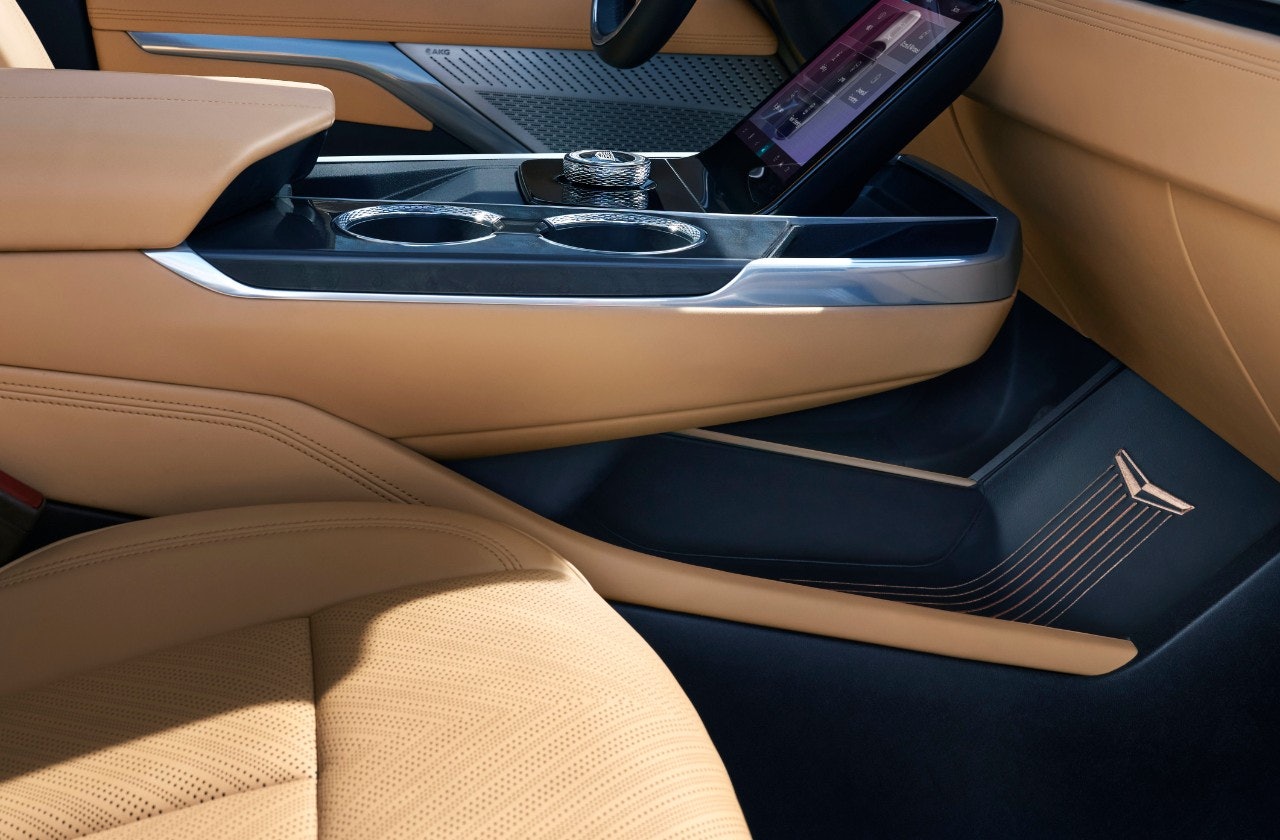
But if the outside will keep Escalade fanboys at the counter, the interior is definitely where the action is at.
That flat-panel dash gets framed by a huge, brushed metal sill that itself makes a sort of subtler-than-bling statement. Sass says that puts the LCD on a “pedestal, where you’re really kind of presenting the instrument panel, while also — and this is part of Cadillac DNA — making it both clean and really, stately.” In other words: This ain’t some 1990s Escalade dipped in gold paint; the slickness is about the entirety of the package. Strafe lines slash skyward across the face of AKG speakers integrated into the front doors, and that pattern repeats via LEDs at shoulder level. Up to 126 colors can be tuned through ambient lighting; cupholders get rimmed with braided metal; seats are patterned with minute perforations that echo the linear patterns on the seats. None of this detail stands out as ostentatious, but as a whole it wows big time.
Powerful but practical
Sure it rolls on 24-inch wheels, and sure it’s big, impressive, and slick, but it’s also smart.
First, even though this Escalade is longer than the gas version, it sits lower, and with the ability to “crouch” upon arrival or at slow speeds; entry and exit are just way easier than with the truck-based prior Escalade. Even if the rear hatch volume drops a tad, the front trunk or “frunk” is massive, with 12 cubic feet. Together, even with the third-row seats still in place (so you’ve still got seating for seven) you’re looking at about as much trunk capacity as most mid-sized SUVs, which makes the IQ a pretty great choice for bigger families.
And because it has four-wheel steering, parking will be easier, since that enables tightening the steering radius by seven full feet at slow speeds, and even to crab-walk sideways into a parking space.
Lastly, not to be one-upped by Ford’s Lightning, Cadillac’s promising that you can run those 200 kWh in reverse, as power for your home during a blackout. And, really, with that big of a battery, probably a whole compound; a mansion, outbuildings, guesthouse and such.
Simply put, at least until battery tech makes another leap in efficiency, the IQ out-kilowatts the competition, winning — for now — the 21st-century version of the horsepower wars.







